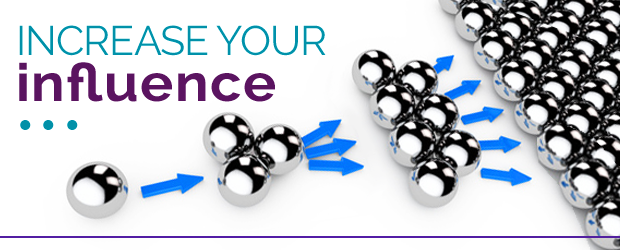During my recent live event, Communicate to Influence & Impact, we explored the impact that one’s communication style can have on a conversation. Throughout your life you have most likely been taught, “do unto others as you would like to have done unto yourself”. While this sends a valuable message of treating others with respect and care, it does not work in the realm of communication. Most of us go through conversations speaking in a language that appeals and makes sense to people just like ourselves — not considering that others may not have the same priorities or focus. For example, if you are a detail-oriented person that is persuaded by facts, figures, and data you may try to persuade others through your extensive research. While this will be highly effective for others just like you, it will fall flat when working with someone who is action-oriented and prefers to quickly get to the bottom-line. Likewise, if you have a tendency to move rapidly through tasks and are comfortable making a quick decision and fixing any imperfections later, you may find yourself in conflict when working with someone who needs to be thoughtful and methodical.
Your style has been crafted throughout your life. Much of your style has been learned from your parents, your teachers, and those that have had a strong influence on you. Over time you have adapted a focus, an understanding of how the world works, and a belief in how things get done. Every style is powerful … every style can build relationships … every style can lead … and every style can influence.
During the live event, Communicate to Influence & Impact, participants gained a clear understand of their personal style and insight into how they naturally approach situations — what inspires them to make a decision or solve a problem. Through this experience, they were also able to appreciate why conflict and communication barriers exist with individuals coming from a different perspective. As a result of our conversation, these high-level, effective leaders had simple yet powerful transformational moments …
“I am the same style during stressful times as I am in favorable conditions, my staff will not know when I’m under pressure“
“I just realized that although it was never my intention, I become a micro-manager during stressful times”
“I hadn’t thought about how an overuse of my strength could become my greatest barrier“
“I can get so much more out of my conversations if I meet the other person where they are and appeal to what is important to them”
“I realize that my style may have been getting in my way in certain situations“
As you begin to truly understand and embrace your style…for better or for worse… you can make conscious choices to find opportunities to apply strengths, recognize when you may be overusing a behavior, identify blind spots enhance your communication and adjust your approach.
I had presented this concept in a previous blog, Now You’re Speaking My Language, in which I outlined four primary communication styles and how to have the most positive influence by speaking in a language that makes sense to the other person. After facilitating my Communicate to Influence & Impact live event, I feel compelled to once again share my insight as I find that we can often get lost in our own style and perspective. Perhaps we move too quickly — or maybe we just forget that not everyone thinks like we do. No matter the reason, when we neglect to consider what is most important to the other person, we hinder the relationship and impair our ability to have a positive influence.
Here are some tips to increase your ability to influence — It’s really just a matter of style:
When Working With Someone Who Is ACTION-DRIVEN: A person who tends to focus primarily on action often makes quick decisions based more on hunches and impressions than on a careful study of the facts. These individuals are often lively and active, seeking new challenges. When working with others, their style tends to be direct as their focus is on bottom-line results. To develop a successful relationship, state your points quickly and directly, give them an opportunity to demonstrate their competence, and provide them with the necessary resources to achieve their goals. They will not be impressed by idealistic principles, detailed plans, or your personal charm…they want to know the impact on results.
When Working With Someone Who Is DATA-DRIVEN: These individuals are highly organized and logical in their approach. Before they are comfortable in making a decision, they will need to conduct research and explore all possibilities before committing to a solution. Their systematic approach does not get clouded by feelings or personal biases. To best influence this style, present your points in a logical and well organized manner, do diligence and conduct research before approaching them with a proposal, and use the past as a basis for taking action in the present. They will not respond well to making a quick decision, making major changes unless you can prove that the plan is foolproof, or display impulsive behavior… they want to make decisions based on facts and reason.
When Working With Someone Who Is RELATIONSHIP-DRIVEN: Just as there are individuals who focus on getting things done and getting things right, there are those that have a primary focus in getting along. For it is their belief that harmonious relationships will lead to greater productivity and efficiency — for if a team is working in synch, successful results will follow. To have an impact, evaluate how others will react to a plan before proposing it, demonstrate flexibility and let them know where changes can be made, be tactful when bringing up difficult issues… they are most concerned with harmony and how others will embrace a decision.
When Working With Someone Who Is QUALITY-DRIVEN: Within each workplace there are many people who are focused on the highest standards of performance and achieving the ideal state. They receive the greatest amount of energy from working on high performance teams and getting the job done “right”. Often their own standards exceed what is required and they take pride in working according to their own expectations. They hold both themselves and others to very high standards. To build a successful relations with this style, show them that you value their idealism and standards of excellence. Honor any commitment you make, even when it may not be important to you. Demonstrate your appreciation for them going the extra mile, and do so yourself… they are most concerned with meeting high standards in a fair collaborative manner.
As you become more adept at reading another person’s style and then flex your approach to meet them where they are, you enhance your ability to have a positive influence.
To learn more about the communication styles or the Communicate to Influence & Impact live event, schedule a Deep Dive Strategy Session with Jill today.




